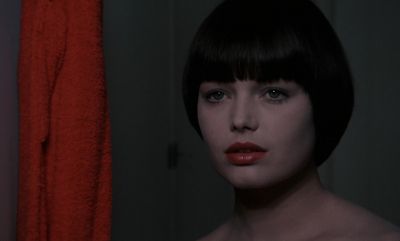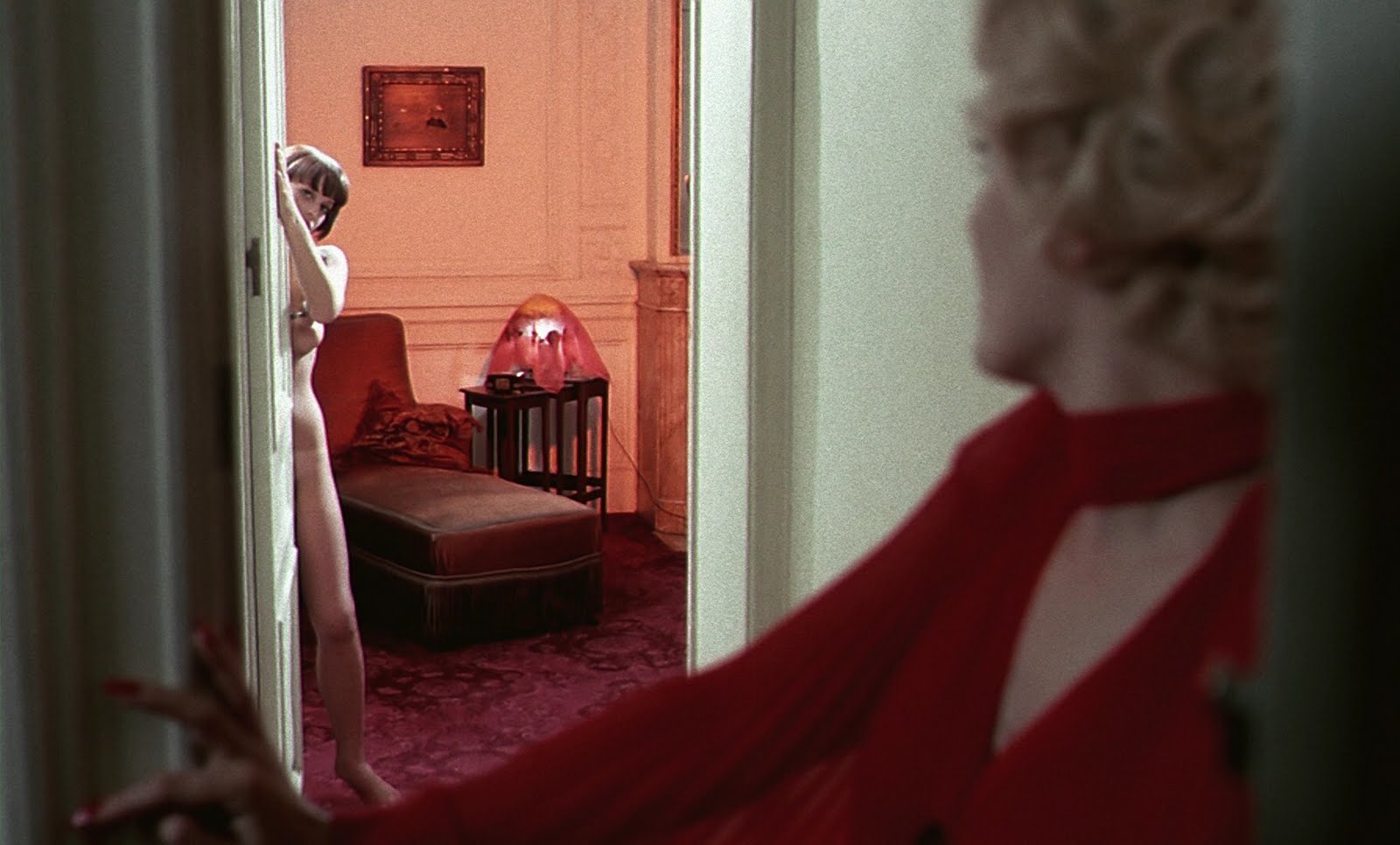Daughters of Darkness (in France, Les Lèvres rouges, and in Belgium, Le Rouge aux lèvres) is a 1971 Belgian horror film (with dialogue in English), directed by Harry Kümel. It is an erotic vampire film, following a style Camille Paglia calls psychological high Gothic.
Paglia writes that, "A classy genre of vampire film follows a style I call psychological high Gothic. It begins in Coleridge's medieval Christabel and its descendants, Poe's Ligeia and James's The Turn of the Screw. A good example is Daughters of Darkness,
starring Delphine Seyrig as an elegant lesbian vampire. High gothic is
abstract and ceremonious. Evil has become world-weary, hierarchical
glamour. There is no bestiality. The theme is eroticized western power,
the burden of history."
http://en.wikipedia.org/wiki/Daughters_of_Darkness
"Daughters of Darkness" is wondrously stylish and tasteful, and
certainly not the sleazy lesbian vampire exploitation flick many people
mistake it for. Compared to the films of, say, Jean Rollin or Jess
Franco who made movies based on the same classic premise, this is a
much more compelling, sophisticated and hypnotizing masterpiece. This
is finally a mature version of the character of Elisabeth Bathory that
puts the emphasis on mystery and creepy atmosphere, rather than on the
naked blood-bathing rituals of the Countess. The nudity here is
strictly functional and all the rest is purely absorbing subject
matter. The script makes a few convoluted and confusing twists halfway
in the film, and they are guaranteed to mislead even the fans that know
the detailed legend of Countess Bathory by heart. It's also a very
beautiful movie to look at and listen to, with delightful photography
and enchanting music. Delphine
Seyrig gives a masterful performance as Bathory. Highly
recommended Euro-Cult accomplishment.
Coventry
http://www.imdb.com/title/tt0067690/reviews?start=30
Delphine
Seyrig drifts gracefully into the lobby, and the Resnais note is
adduced: "It seems Madam may have already stayed in this hotel," the
concierge says, jogging his memory to earlier decades (and to Marienbad). Harry Kümel takes the lead from Nosferatu
and establishes the vampiric element as the unbalancing of the
heterosexual couple, though less as an outside threat than as a
beguiling force that heightens the couple's inner conflict. The setting
is Belgium, painted crimson, blue and gold; John Karlen and Danielle
Ouimet are the young newlyweds whose honeymoon in Ostend is already
tense with the husband's odd refusal to break the news to his mother
(possibly because "Mother" is actually Fons Rademakers, a rouged,
perfumed mark of Old World faggotry). Their hotel is empty until
Seyrig's Countess Bathory arrives in satiny '30s gowns along with her
Lulu-coiffed "secretary" (Andrea Rau), one exquisitely soigné and the
other exquisitely doleful. The slew of slaughtered women (slashed
wrists, drained bodies) taking place in Bruges rouses Karlen's
fascination with death -- the couple's formal drawing-room chat with the
Countess (her recipe for eternal beauty: "A very strict diet, lots of
sleep") climaxes with the husband writhing in ecstasy to her graphic
description of medieval atrocities. Kümel understands his Le Fanu
antecedents (Dracula's Daughter, Blood and Roses) and contemporaries (Vampyros Lesbos, The Velvet Vampire), and makes his decadence drolly enchanted, building insinuating mood until blood comes in Psycho's
shower-sex-blade equation to grant Rau's request ("I wish I could
die"). Ouimet's soul lies at the center of the somnambulist tug of war
between bloodsucker and asshole hubby -- both sides are vanquished
(Karlen in a set-piece that rhymes a distressed ocular iris with a
deadly glass bowl, Seyrig in a baroque reworking of Lana Turner's
breakdown in The Bad and the Beautiful), the heroine is left to begin a new decade with expanded appetites.
Fernando F. Croce
http://www.cinepassion.org/Reviews/d/DaughtersDarkness.html
Sex and death are linked in Daughters of Darkness. “Don’t
lie to me. It gave you pleasure. You actually enjoyed seeing that girl’s
dead body,” Valerie says to Stefan in what seems a moment of
foreshadowing but ultimately becomes one of misdirection. And herein
lies the real intrigue: the darkest elements of the film aren’t there
for their own sake, but rather to intimate subtle aspects of the
characters. These characters aren’t looking for a sadistic romp; they
each have their own needs and desires, often with conflicting means of
acquiring them. As a result, the transformations they undergo are far
more subtle than human into vampire.
Where the film announces itself most loudly, then, is in
its visuals: vibrant red veils laid over lampshades; sharp blacks and
whites; and the comparatively desaturated grays and blues of early
morning on the ocean. Though striking, the imagery tends to work
alongside the goings on rather than dominate them, and the seamless
transitions between the many colors in cinematographer Eduard van der
Enden’s palette make for a frequently visually arresting experience.
Ultimately, the film’s relative obscurity is unsurprising insofar as it
exists on the fringes of both mainstream and cult cinema. Too
transgressive for the former, too tame for the latter, it occupies an
in-between state that only makes it more fascinating—Daughters of Darkness
upturns more genre conventions than it follows. It is neither a
bloodbath nor a thinly-veiled morality tale; its candle burns slowly,
and from only one end. The resultant half-light is fitting: title
notwithstanding, Daughters of Darkness shows itself to be a strange beast fit for neither light not dark.
Michael Nordine
http://notcoming.com/reviews/daughtersofdarkness/
Tuesday 30 October 2012
Subscribe to:
Post Comments (Atom)





No comments:
Post a Comment